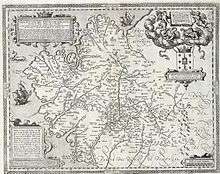Galicia in the 20th century
Part of a series on the |
|---|
| History of Galicia |
 |
|
|
The period of Solidaridad Gallega ("Galician Solidarity"), the beginning of the modern Galician nationalist movement, began in 1907 and ended around the First World War. Its unsuccessful aim was to create a unified electoral coalition to eliminate caciquism and obtain Galician representation in the Cortes Generales, the parliament of Spain.
The first stage of 20th-century Galician history lasted until the dictatorship of Primo de Rivera. In this stage the Galician nationalist Irmandades da Fala ("Brothehoods of the Language") began to appear to promote the Galician language. When they began to expand, the political idea of Galicianism was popularized. Intellectuals such as Vicente Risco and Ramón Otero Pedrayo travailed in the cultural aspect of galicianism and Porteira and Lois Peña Novo in the political galicianism. They were taken over by the members of the xeración Nós ("We" generation), united around a magazine of the same name (Nós). This members of the Xeneración Nós were supported between 1920 and the Spanish Second Republic by a preoccupation about the creation of a moderated galicianism.
Second Republic
In the Second Republic there were two principal groups: the Autonomous Galician Republican Organization and the Partido Galeguista (Galicianist Party). This party, the PG, was a union of different ideologies with the common denominator of the Galicianism. Its members were people as Vicente Risco, Ramón Otero Pedrayo, Ramón Cabanillas, Suárez Picallo, Castelao... In 1936 the PG, to get the Galician Statute, allied with the People's Front, and as a result of this alliance the party had its first splitting. Nevertheless, the Statute was got and Castelao presented it in the Spanish Parliament a few days before the Spanish Civil War.
Franco's dictatorship
During the Franco's dictatorship, called by Celso Emilio Ferreiro "Lond night of stone", they were different repressive stages to the galicianist ideas, after the armoured fight of many galicianist people against Franco in the Spanish Civil War.
In the exile, was approved the Galician Statute by the Spanish Parliament in the exile, and in Buenos Aires it was established the Council of Galicia, directed by Castelao and Suárez Picallo. In 1944 was published Sempre en Galiza (Always in Galicia), ideologic guide of the galicianism. With the pass of the time, the cultural actions were restarted, with the creation of the Editorial Galaxia.
In 1964 the Galician People's Union (Unión do Povo Galego, UPG), a nationalist revolutionary left-wing party, as was described by Méndez Ferrín) and the Galician Socialist Party (PSG, with X.M.Beiras and García Bodaño) was formed.
Democracy
| 1975 | Establishment of the `Xunta Democrática de Galicia |
| 1976 | Establishment of the Democratic Table of Galicia |
| 1977 | Establishment of the Assembly of the Parliamentaries of Galicia |
| 1978 | Pre-autonomic Xunta presided by Antonio Rosón Pérez (Union of Democratic Center) |
| 1979 | Pre-autonomic Xunta presided by José Quiroga Suárez (Union of Democratic Center) |
| 1980 | Statute of Autonomy of Galicia approved by referendum. Galicia is define as an Historical nationality. |
| 1981 | First Autonomic Elections |
| 1982 | President of the Xunta de Galicia: Xerardo Fernández Albor (People's Alliance) |
| 1987 | President of the Xunta de Galicia: Fernando González Laxe (Socialists' Party of Galicia) |
| 1990 | President of the Xunta de Galicia: Manuel Fraga Iribarne (People´s Party of Galicia) |
| 2005 | President of the Xunta de Galicia: Emilio Pérez Touriño (Socialists' Party of Galicia) |